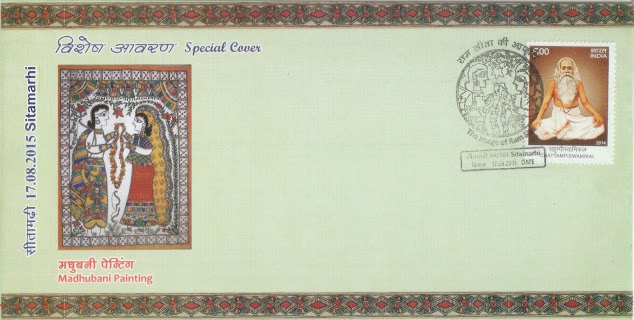Madhubani painting is a style of painting named after the Madhubani district of Bihar, India, which is where it originated. Artists create these paintings using a variety of mediums, including their own fingers, or twigs, brushes, nib-pens, and matchsticks. The paint is created using natural dyes and pigments. The paintings are characterised by their eye-catching geometrical patterns.
According to legend, Madhubani paintings were first created at Mithila, the birthplace of Hindu goddess Sita. When Sita and her husband Prince Rama were to be married, King Janak, father to Sita, asked for paintings to capture moments of the marriage.
Madhubani painting was traditionally created by the women, the painting was done on freshly plastered mud walls and floors of huts; but over the years it has moved to varied mediums including cloths, handmade papers, and canvas. There is ritual content for particular occasions, such as birth or marriage, and festivals, such as Holi, Surya Shasti, Kali Puja, Upanayana, and Durga Puja.
GI Tag Registration Date : 16 May 2007
GI Tag Number : 37
Certificate Number : 31
Geographical Area : Bihar
Special Cover Release Date : 17 August 2015
Cancellation : Sitamarhi 843 301
Type : Special Cover
Cover Identification Number : BH/08/Aug/2015
Enlarged View of Illustration
Images of stamps issued by India Post relevant to Madhubani Painting is furnished below
Stamp on Madhubani Painting depicting Flower with Girls
Issued on 15 October 2000







No comments:
Post a Comment